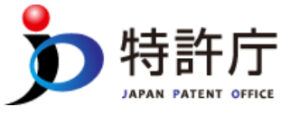Article
(Article 3, Paragraph 2 of the Trademark Law)
Even if the trademark falls under items 3 to 5 of the preceding paragraph, if it can be recognized that the consumer is a product or service related to some business as a result of use, the same paragraph. Regardless of the provisions of, trademark registration can be obtained.
Outline of Article 3, Paragraph 2 of the Trademark Law
Trademarks that do not have discriminating power are not registered under the provisions of Article 3, Paragraph 1, Items 1 to 6 of the Trademark Law, but trademarks that have become well-known at the national level through use are trademarks. As an exception to the provisions of Article 3, Paragraph 1, Items 3 to 5 of the Act, trademark registration can be obtained.
Requirements to be subject to the provisions of Article 3, Paragraph 2 of the Trademark Law
(1) The applied trademark and the used trademark are the same.
The following is an excerpt from the trademark examination standards
(1) About trademarks
If the applied trademark and the used trademark differ in appearance, it is not recognized that the applied trademark is used.
However, even if the applied trademark and the trademark used do not exactly match in appearance, the identity as a trademark will be impaired in consideration of the degree of difference in appearance and the actual situation of transactions in the designated goods or designated services. If it is found that it does not exist, it is recognized that the applied trademark is being used.
(Example 1) When identity is recognized
(1) When the applied trademark and the trademark used have only a difference between vertical writing and horizontal writing as the writing method of characters.
(2) When both the applied trademark and the used trademark are commonly used fonts, do not have features that attract the attention of traders or consumers, and both fonts are similar.
(Example 2) When the identity is not recognized
(1) When the applied trademark is in cursive script, while the trademark used is in regular script or semi-cursive script.
(2) When the applied trademark is hiragana, while the trademark used is katakana, kanji, or romaji.
③ When the applied trademark is an Arabic numeral, while the trademark used is a Chinese numeral.
(4) When the applied trademark has a mode like P, while the used trademark is P, P, P.
⑤ When the applied trademark is a two-dimensional trademark while the used trademark is a three-dimensional trademark.
(2) About goods or services
If the designated goods or services of the applied trademark and the goods or services used by the used trademark are different, it is not recognized that the applied trademark is used for the designated goods or designated services.
However, even if the designated goods or designated services do not exactly match the goods or services used, the identity of the designated goods or designated services and the goods or services used will be impaired in consideration of the actual situation of the transaction. If it is found that it is not possible, it is recognized that the applied trademark is used for the designated goods or designated services.
(2) Have national level awareness (things that consumers can recognize as products or services related to some business)
The following is an excerpt from the trademark examination standards
About "things that consumers can recognize as goods or services related to some business"
(1) About consumer recognition
"A person who can recognize that a consumer is a product or service related to some business" is recognized nationwide among consumers of the product or service as a display of the source of some people. It means what is.(2) Reasons for consideration
Whether or not this item applies is determined by comprehensively considering, for example, the following facts.Regarding the facts regarding the usage status of the trademark, the nature and the like are substantially grasped, and the degree of recognition of the consumer of the trademark is estimated accordingly.
(1) Structure and mode of the applied trademark
(2) Trademark usage mode, usage quantity (production quantity, sales quantity, etc.), usage period and usage area
③ Advertising method, period, region and scale
(4) Presence / absence and usage status of marks that are the same as or similar to the applied trademark by a person other than the applicant (in the case of an application for trademark registration of a collective trademark, "other than the applicant or its members")
⑤ The nature of goods or services and other actual conditions of transactions
⑥ Results of a questionnaire surveying consumers' trademark recognition(3) About the evidence method
The fact of whether or not this section applies is proved by, for example, the following evidence.
(1) Photos or videos showing the actual usage of the trademark
② Transaction documents (order slip (purchase order), shipping slip, delivery slip (delivery note and receipt), invoice, receipt or commercial book, etc.)
③ Advertisements by the applicant (newspapers, magazines, catalogs, leaflets, TV commercials, etc.) and evidence showing their achievements
(4) Introductory articles (general papers, industry papers, magazines, Internet articles, etc.) by persons other than the applicant regarding the applied trademark
(5) Report on the results of the application trademark recognition survey (questionnaire) for consumers (however, the fairness and neutrality in preparing the implementer, implementation method, target person, etc. should be fully considered).










